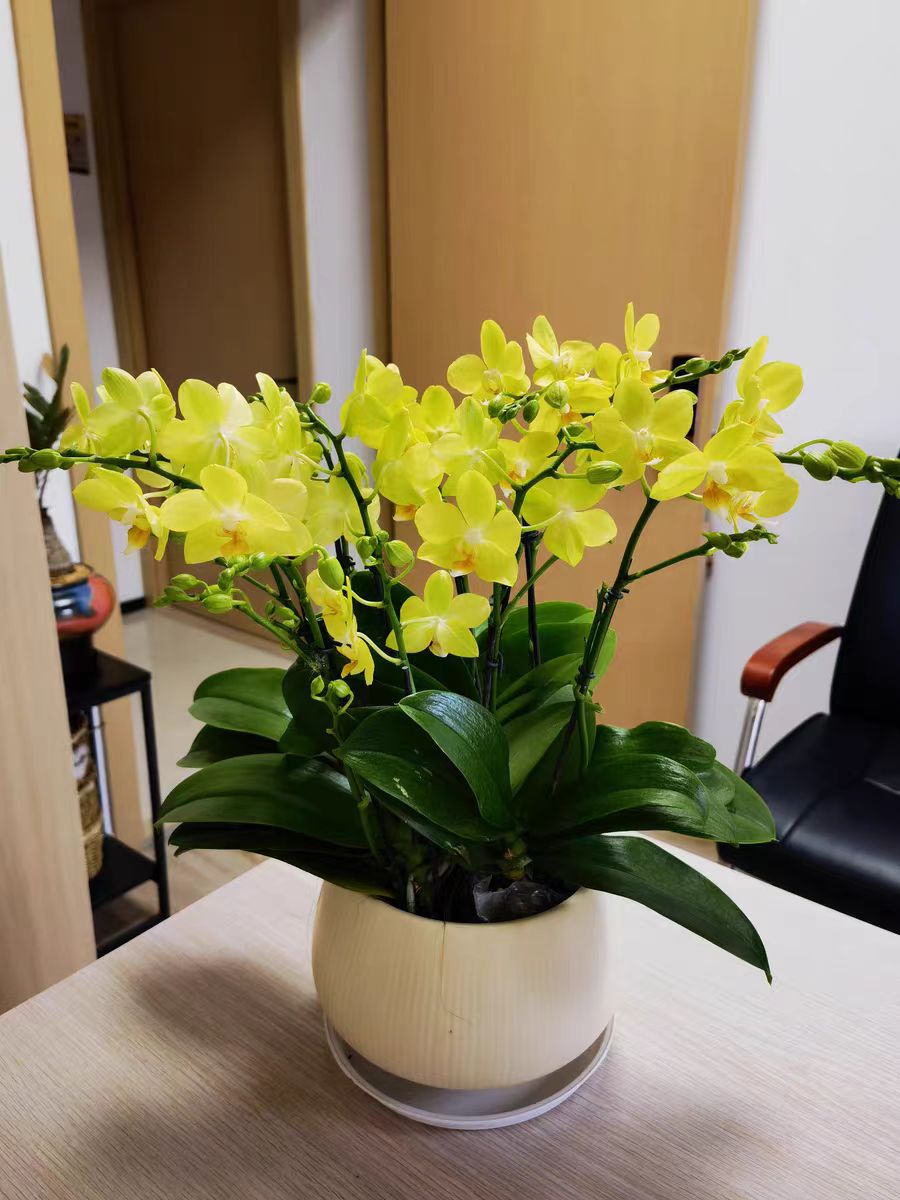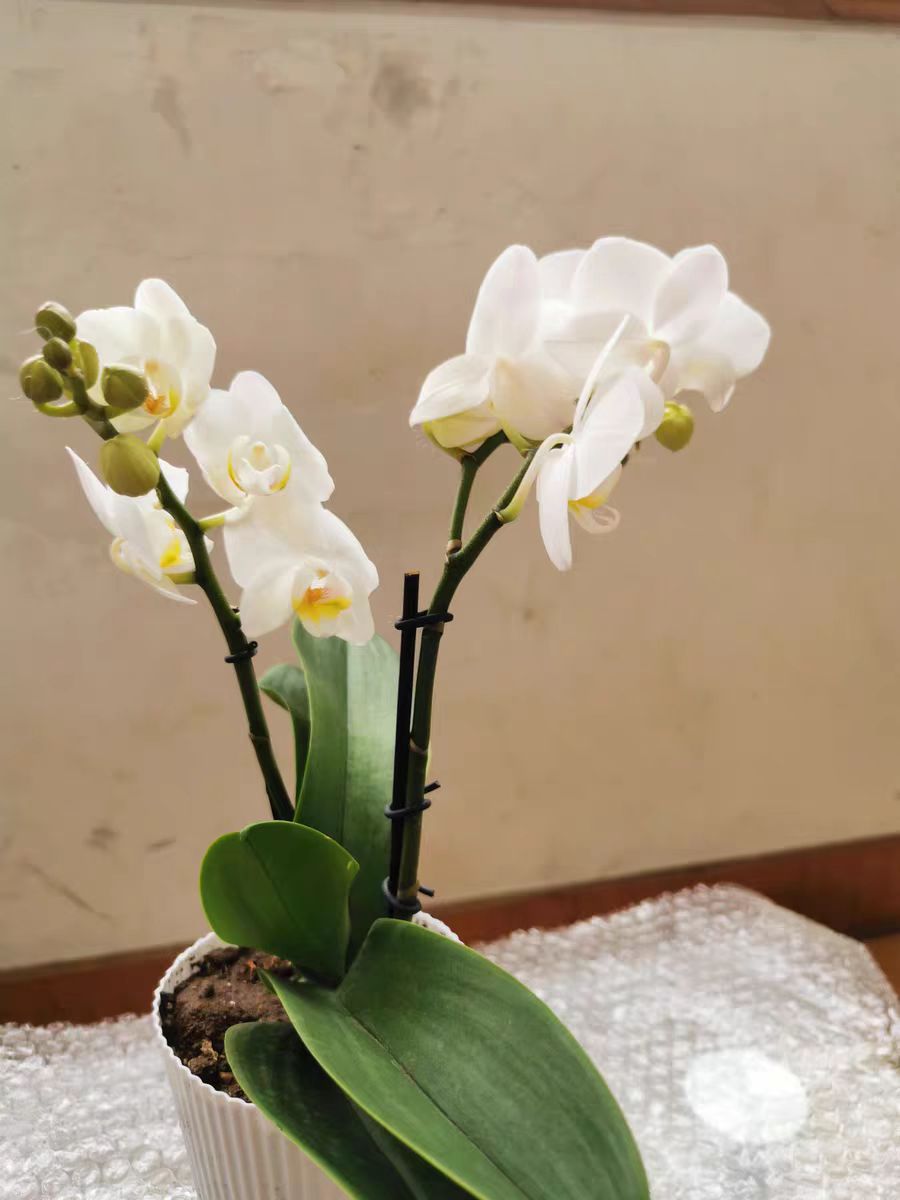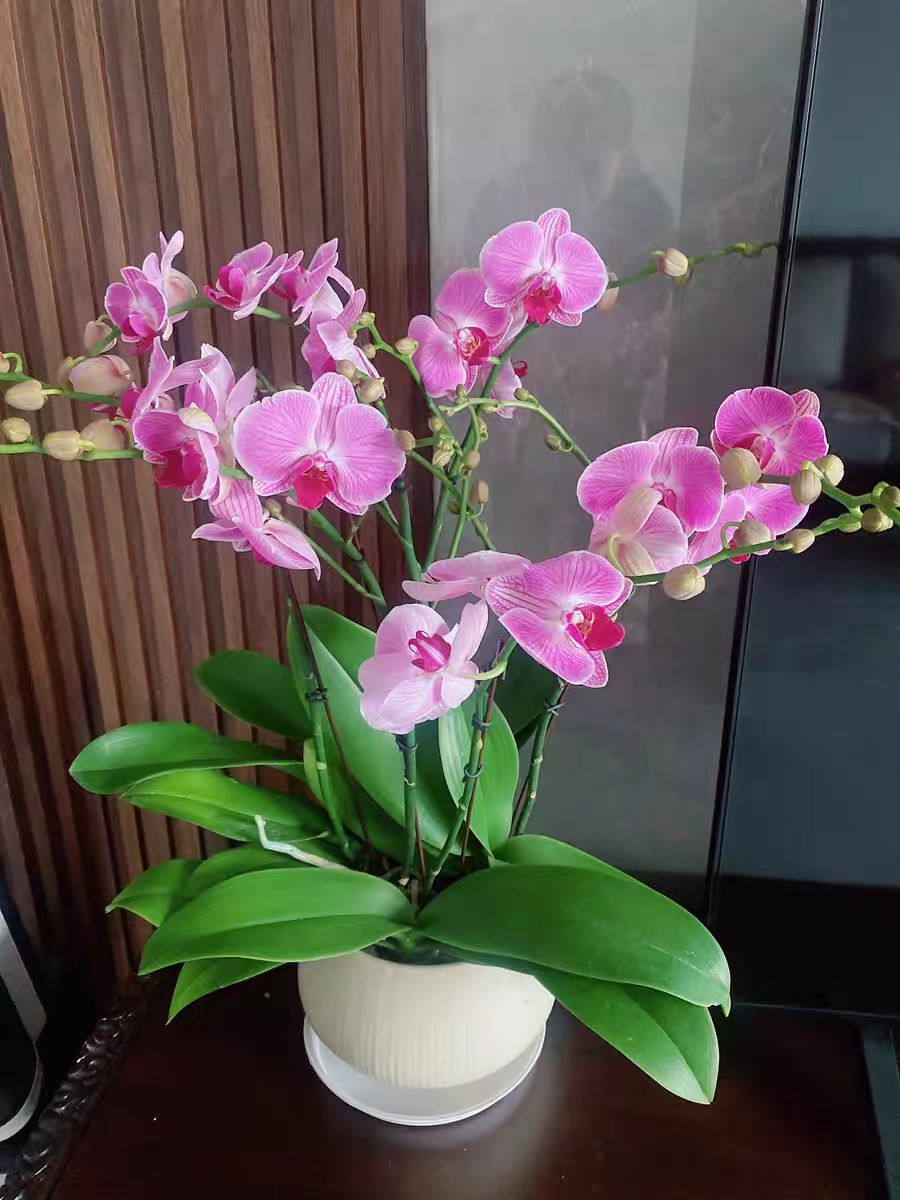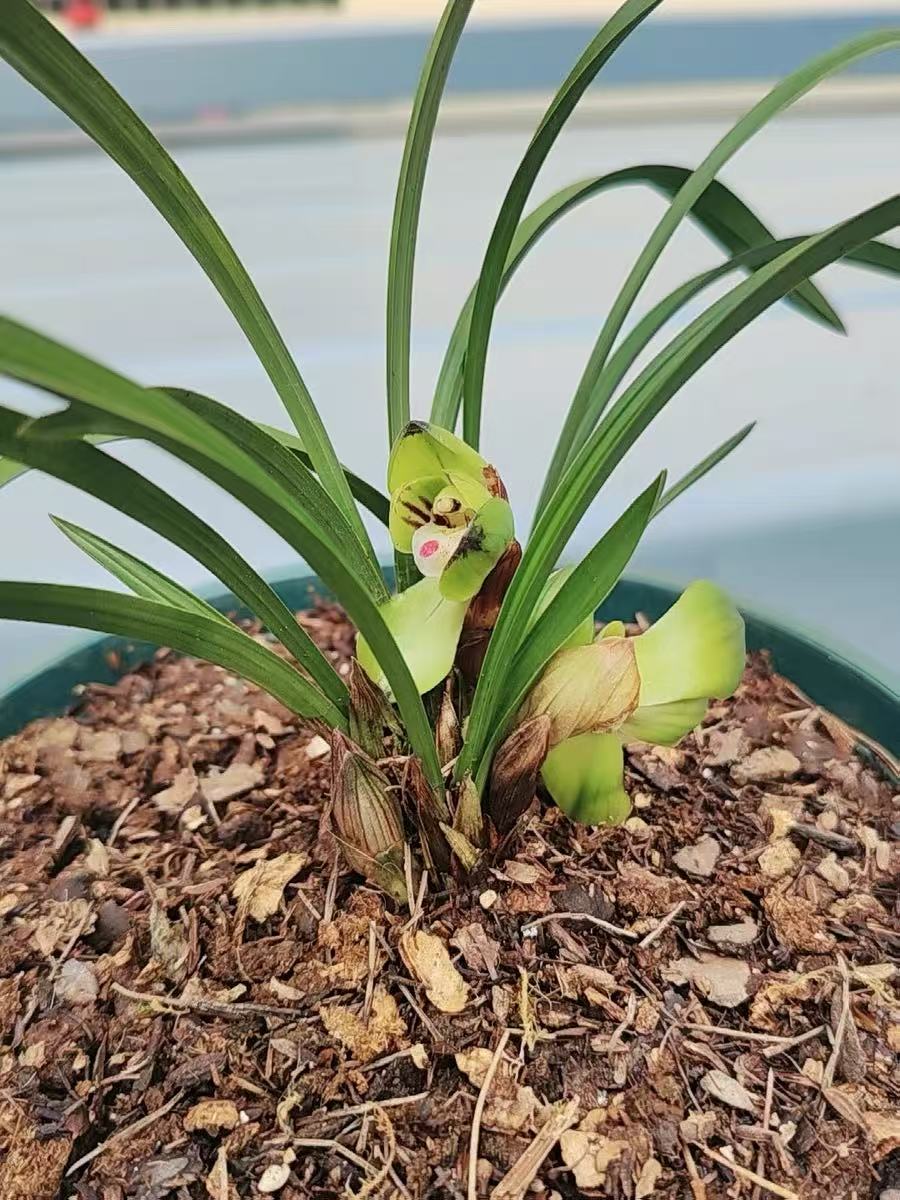Pollination is an interesting part in the cultivation of Phalaenopsis. Many flower enthusiasts are curious: Does Phalaenopsis need to be pollinated? And how should it be maintained after pollination? These questions are not only related to the reproduction of Phalaenopsis but also affect the subsequent growth and development of the plant.
In the natural environment, Phalaenopsis mainly relies on pollinators such as insects for pollination, and then reproduces offspring. In home cultivation or commercial planting, whether to pollinate depends on the needs. If you just want to enjoy the flowers and let the Phalaenopsis bloom naturally, there is no need for pollination, and its flowers can maintain a relatively long ornamental period. However, if you want to try to propagate new plants or carry out cross-breeding to cultivate new varieties, pollination is essential. For example, if a flower enthusiast wants to cultivate Phalaenopsis with multiple excellent traits, they can transfer the pollen of different Phalaenopsis varieties to the stigma of another variety through artificial pollination, hoping to obtain seeds with new characteristics.
When you decide to pollinate the Phalaenopsis, you need to seize the right timing. It is best to pollinate when the flowers are fully open and the pollen is mature. The pollen of Phalaenopsis is in a clump, usually located in the pollen sac at the top of the column, while the pistil is at a lower position in the center of the flower. When pollinating, you can gently remove the pollen clump with a clean toothpick, tweezers, or cotton swab, and then carefully place it on the stigma of the pistil to complete the pollination operation. Be sure to be gentle during the operation to prevent damage to the flowers.
After a successful pollination, obvious changes will occur to the Phalaenopsis. The originally delicate and beautiful flowers will wither rapidly because the plant concentrates its nutrients on the development of the fruits and seeds. The ovary at the base of the flower stalk begins to swell and gradually forms an elongated fruit, that is, a capsule, which contains the seeds of the Phalaenopsis.
The maintenance after pollination is crucial and directly affects the development of the seeds and the health of the plant. In terms of light, Phalaenopsis should be given sufficient scattered light. Light is the key to photosynthesis, which can provide energy for the development of the seeds and prompt the plant to produce more nutrients. But avoid direct strong light, otherwise, it is easy to burn the leaves and the tender fruits. You can place it in a bright place indoors where the sun does not shine directly.
Temperature is also crucial for Phalaenopsis after pollination. The suitable temperature is between 18℃ and 28℃. If the temperature is too high, the water evaporates quickly, and the plant is prone to dehydration, and the development of the fruits is also affected. If the temperature is too low, the plant's metabolism slows down, and the development of the seeds is slow, and it may even stop developing. Pay attention to shading and cooling in high summer temperatures, and take good insulation measures in cold winters.
Water management requires special attention. Keep the substrate moderately moist and follow the principle of "seeing dry and seeing wet". If it is too wet, it is easy to cause root rot, and if it is too dry, the plant will be short of water, affecting the development of the fruits and seeds. When watering, try to make the water temperature similar to the room temperature to avoid stimulating the roots. At the same time, the air humidity cannot be ignored. You can maintain the air humidity at 60% - 80% by spraying mist, placing a water basin, etc., to create a suitable growth environment for Phalaenopsis.
Reasonable fertilization can supplement nutrients for Phalaenopsis. After pollination, the plant's demand for phosphorus and potassium fertilizers increases. You can apply a thin solution of phosphorus and potassium fertilizers, such as potassium dihydrogen phosphate solution, once every 1 - 2 weeks to promote plump fruits and the maturity of the seeds. But pay attention to applying thin fertilizers frequently and avoid concentrated fertilizers from burning the roots.
Pollination of Phalaenopsis is a challenging and surprising task, and careful maintenance after pollination is the guarantee for harvesting healthy seeds and new plants. By mastering these key points, flower enthusiasts can discover more possibilities in the cultivation of Phalaenopsis and witness the wonderful continuation of life.
Does Phalaenopsis need to be pollinated?

Share with
Tagged in :




Leave a Reply